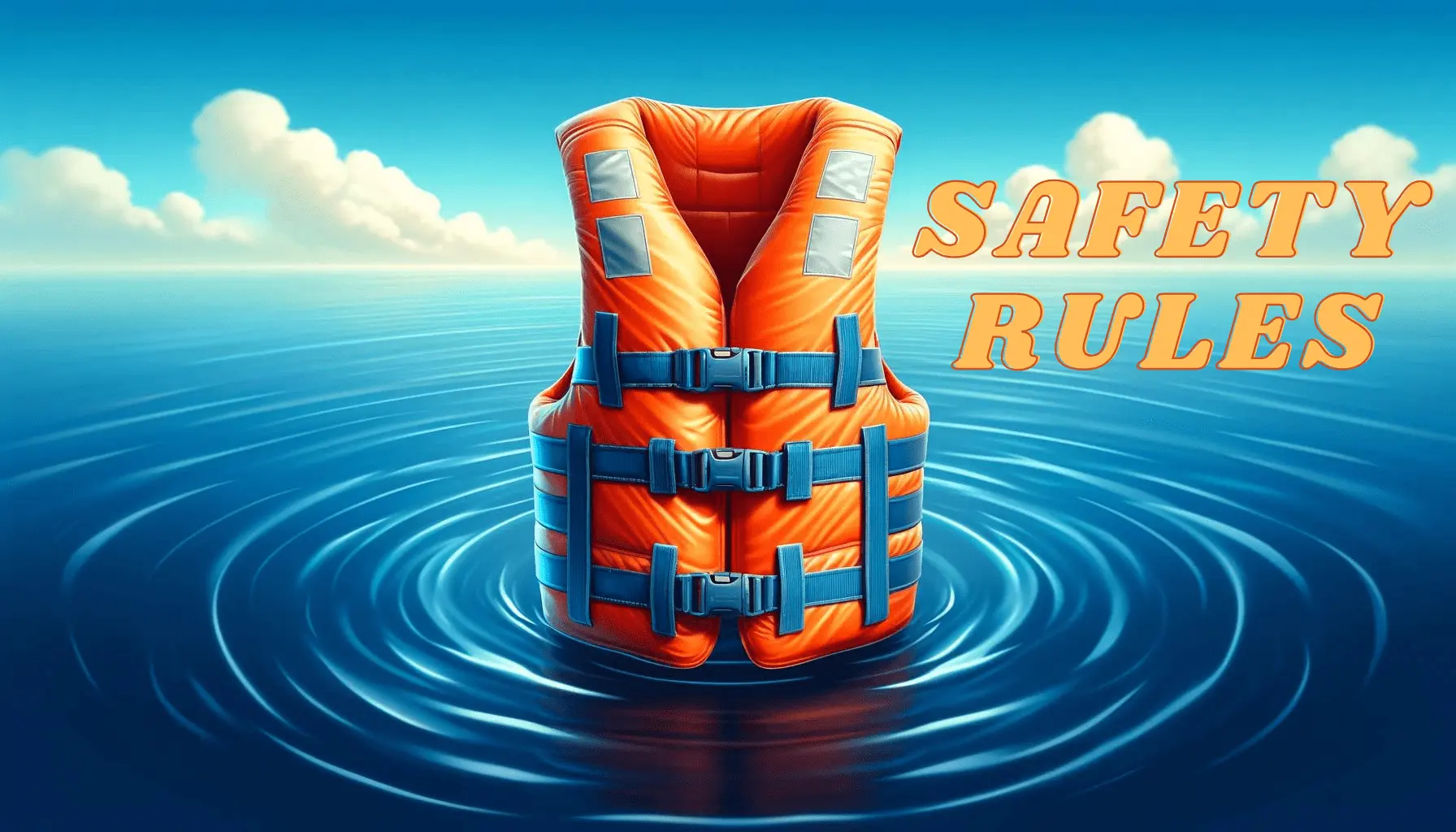As the thrill-seeker in you craves the next adrenaline rush, you might find yourself face-to-face with the mighty challenge of kayaking upstream. Sure, kayaking downstream with the river flow is a breeze, but upstream?
The relentless current appears as an insurmountable obstacle, tugging at your kayak, challenging your strength, and contesting your determination at every stroke. You push against the current and paddle upstream, but the river is relentless, almost as if taunting your efforts.
Yet there’s an irresistible allure to the challenge—a call to the wild that the ardent adventurer in you cannot ignore.
Imagine harnessing the raw power of the river, commanding your kayak upstream, and becoming one with the swirling rapids. The secret? It all lies in mastering and practicing upstream paddling.
In this blog, I will guide you through the intricate nuances of upstream kayaking, transforming the impossible into a thrilling journey towards conquest.
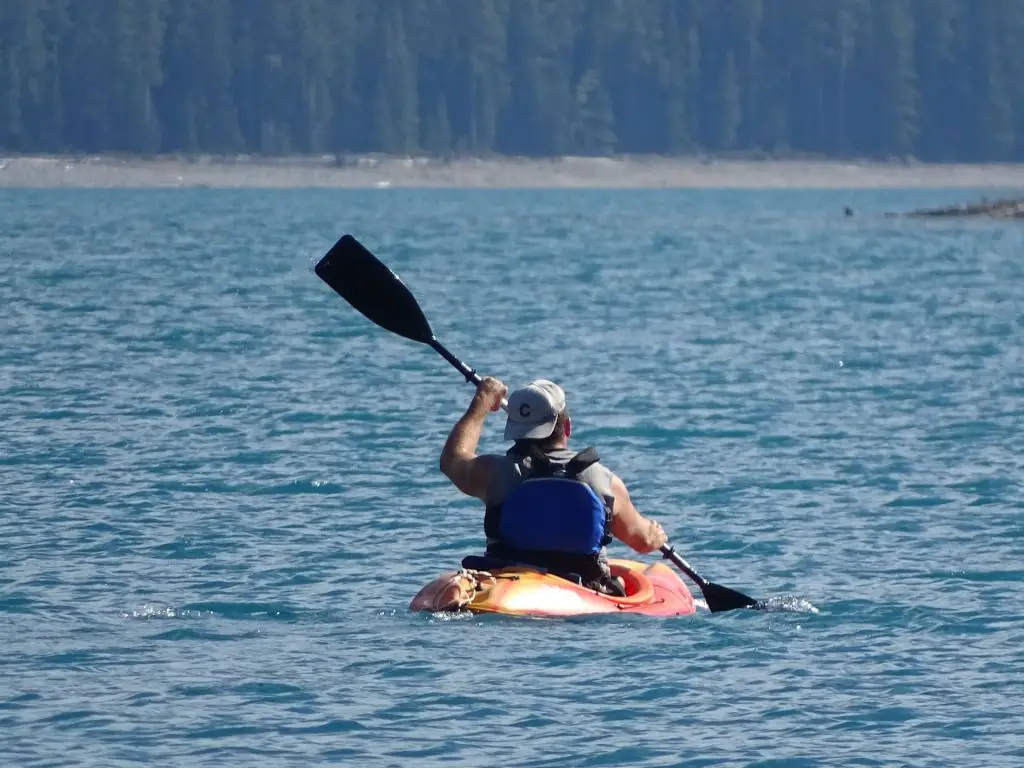
Can You Kayak Upstream, And How Hard Is It?
Can you kayak upstream? Absolutely! It’s a bold undertaking that involves a battle of strength against the forceful current of a river. But for those who rise to the challenge, it’s an exhilarating, rewarding experience.
You can just watch the video below and see that it is possible.
Now, how hard is it? So it depends on several factors, like your physical fitness and water conditions. It will be harder to paddle in a river with a current of 3 miles per hour than only 1 mile.
Kayaking upstream demands more than just physical exertion; it requires strategic paddling upstream, an understanding of river dynamics, and a honed skill set to maneuver your kayak upstream effectively.
The amount of current in the river and how well you paddle will determine how challenging upstream kayaking will be. A slow-moving stream could be quite manageable, even for a novice. In contrast, a river with a rapid current requires seasoned skills, strength, and determination.
In essence, kayaking upstream is not a leisurely paddle; it’s an adventurous endeavor. You will be challenged and pushed by the river, but the sense of accomplishment that comes from beating the current and the thrill of cooperating with nature’s might are unquestionably fulfilling.
It’s a unique test of endurance, skill, and harmony with the water. If you’re up for the challenge, kayaking upstream can be an epic adventure!
Selecting Your Vessel: Types of Kayaks Suitable for Upstream Navigation
Venturing into the world of kayaking upstream requires not just robust skills but also the right kayak. The relentless push of the current, the swirling eddies, and the unyielding riverbed demand a craft that’s capable, resilient, and responsive.
When choosing a vessel to kayak upstream, certain design features are paramount. A kayak with a sharp bow, known as a rocker, will enable better maneuverability against the current.
Also, a shorter length may be beneficial, as it allows for easier direction changes in rapid water. Stability is crucial, so a wider hull can provide the necessary balance.
Additionally, consider kayaks with a strong hull material, such as polyethylene or composite blends, to withstand potential impacts.
Lastly, a comfortable seat with back support is invaluable for long upstream journeys. Each of these elements will contribute to a more efficient and enjoyable upstream paddling experience.
So, if you’re preparing to paddle upstream, let’s steer you in the right direction with the most suitable types of kayaks for this challenging endeavor.
Whitewater Kayaks
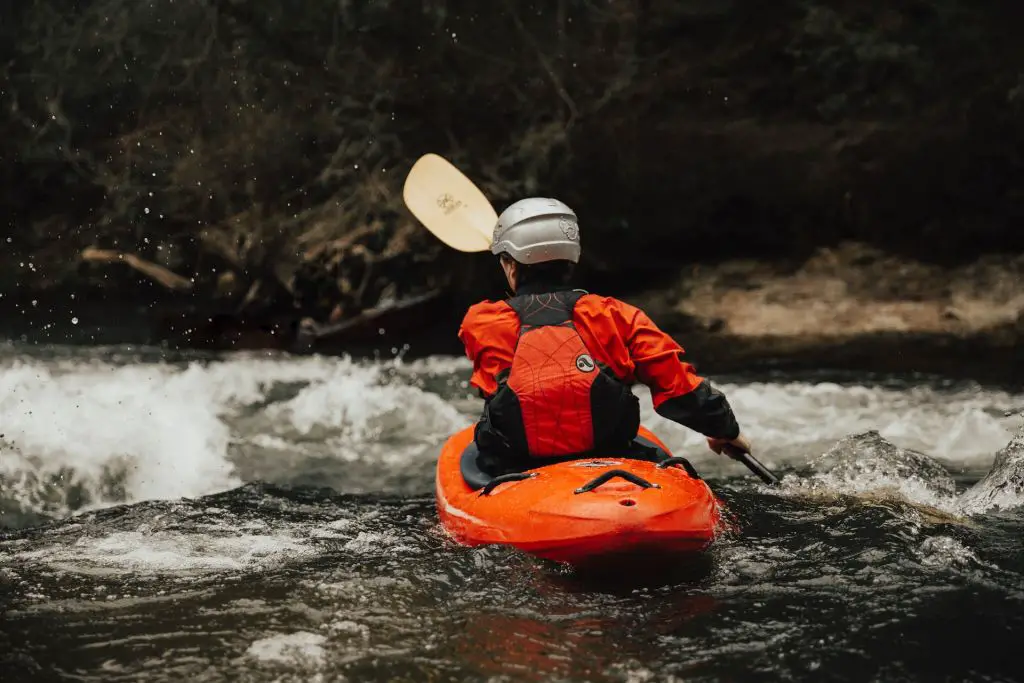
Built to brave the untamed waters, whitewater kayaks are a dependable choice for kayaking upstream.
These stout crafts with a robust hull and compact structure prioritize maneuverability – a key attribute when you’re battling against the current. Depending on your skill level and the nature of the river, you can select from playboats, creek boats, and river runners, each designed for specific whitewater conditions.
Inflatable Kayaks
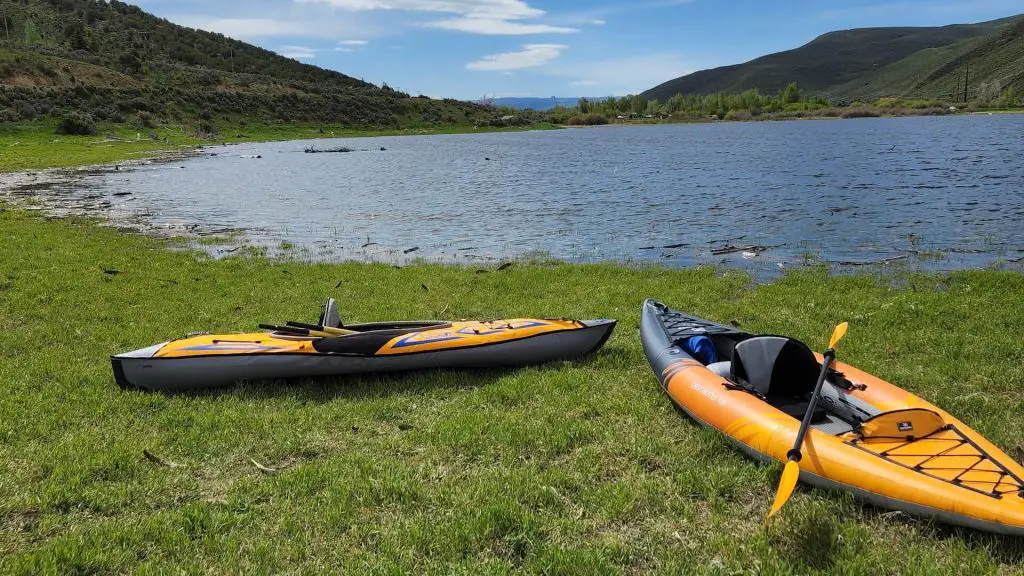
Inflatable kayaks, with their buoyant build and hardy material, are an unexpected yet effective ally for upstream paddling. Despite their lightness, they bring a tenacious spirit to the water, offering durability and ease of handling. Plus, their compact storage and portability make them perfect for spontaneous river kayaking expeditions.
Touring Kayaks

Also known as sea kayaks, touring kayaks blend speed and tracking with their sleek, elongated design.
These traits are valuable when paddling against the current over long distances. However, they can be challenging to handle due to their narrow build and require proficient paddling skills.
Crossover Kayaks

The jack-of-all-trades in the kayaking world, crossover kayaks, offer an impressive blend of attributes from whitewater and touring kayaks. They’re adaptable, capable of handling both serene streams and turbulent rapids, which makes them an excellent choice for a variety of upstream conditions.
Upstream Techniques: Paddling Against the Flow
The Power Stroke
At the heart of effective upstream paddling is the power stroke. This proper paddling technique demands a vigorous, profound stroke, utilizing your upper body power to counter the current, which can run at several miles per hour.
The success of this technique lies in the rotation of your torso, involving your core to maximize the force of each stroke. Ensure the paddle blade is fully submerged, providing a solid base to exert against. In each dominant stroke, power and precision must harmoniously coexist.
Ferrying
Ferrying is a tactical maneuver that enables you to traverse sideways across the current without losing ground.
To accomplish this, angle your kayak upstream against the current, employing sweeping strokes on the downstream side to generate momentum across the flow. This strategy can be an effective way to evade obstacles or reposition yourself midstream while paddling upstream.
Eddy Turns
Eddies are areas where the water flows upstream, usually found behind large rocks or obstacles. An eddy turn lets you take advantage of these natural features to rest, scout ahead, or change direction.
To execute an eddy turn, approach the eddy at an angle, performing a sweep stroke on the downstream side as you enter. This maneuver requires timing and finesse, but it’s a valuable skill when paddling upstream.
S-Turns
The S-turn is a navigational strategy useful when paddling upstream. By paddling in an “S” pattern, you can work your way up the river, moving from one eddy to another. This technique allows you to use the river’s features to your advantage, conserving energy and making upstream progress more manageable.
Brace Strokes
Brace strokes are defensive maneuvers that help you maintain balance in turbulent waters. A low brace involves leaning your body into the turn while keeping your paddle low and flat on the water surface. A high brace is similar, but with the paddle positioned high and close to your upper body. Mastering brace strokes can be crucial to preventing capsizes while kayaking upstream.
Reverse Paddling
At times, you may need to navigate backward, whether to dodge an obstacle or adjust your position.
The reverse paddling allows you to do just that. It’s essentially the forward stroke in reverse, pushing against the water with your paddle, showcasing the flexibility of paddle upstream techniques.
Safety First: Mitigating Risks In Upstream Kayaking
Navigating rivers and streams in a kayak provides both a thrilling adventure and a unique way to connect with nature.
However, when you decide to paddle upstream, it’s crucial to keep safety at the forefront of your mind. Here are some key considerations to ensure you can enjoy your upstream journey safely.
Equipment Check
Before you start your upstream kayaking adventure, a thorough equipment check is vital. Your kayak should be in excellent condition, with no leaks or damage.
Similarly, your paddle should be sturdy and reliable. Any equipment failure during your journey can put you in a potentially dangerous situation. Regular maintenance checks can ensure your gear is always ready for the challenge.
Personal Protective Equipment
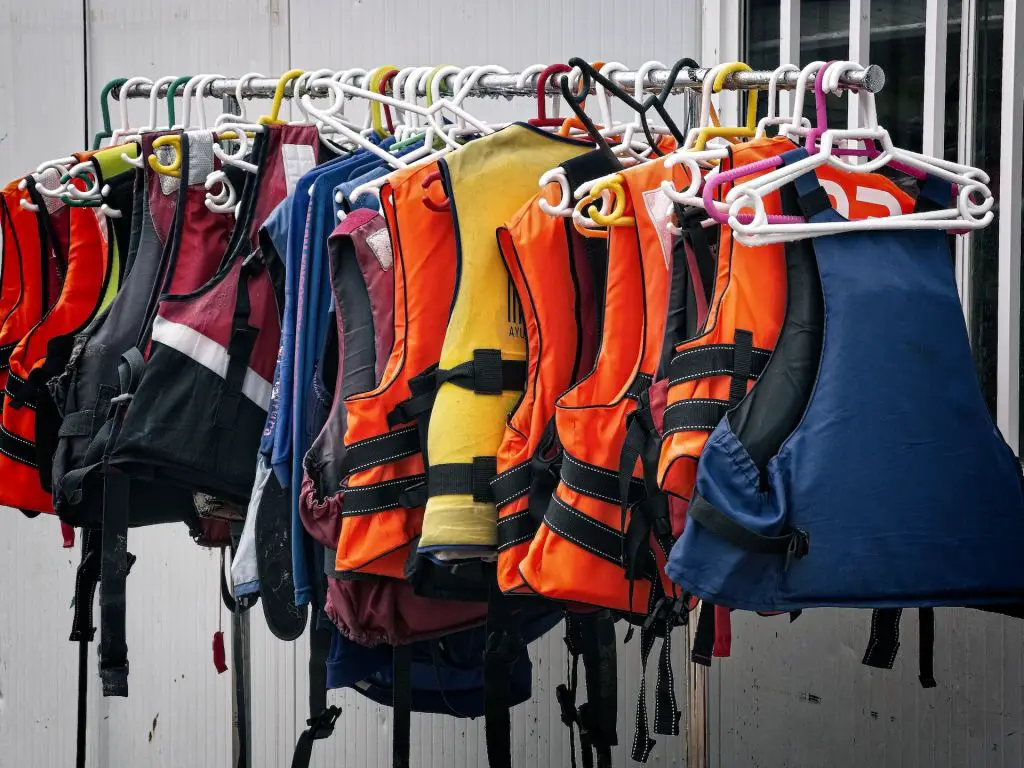
Wearing personal protective equipment (PPE), such as a lifejacket or personal flotation device (PFD), is non-negotiable when kayaking.
Helmets can protect your head from potential impacts, while gloves can provide a better grip on your paddle and protect your hands from blisters. Wearing suitable PPE can significantly reduce the risk of injury in the event of an accident.
Weather and Water Conditions
The weather can have a significant impact on water conditions. A sudden storm, for example, can cause currents to become more challenging to navigate.
Always check the weather forecast and river conditions before you set out. If the conditions seem unfavorable, it’s better to postpone your trip.
Communication Devices
Always carry a waterproof communication device, such as a VHF radio, to call for help if needed. In areas where radio signals may not be reliable, a whistle can serve as a simple, yet effective signal device. Being able to communicate in emergencies is essential for safety.

Conservation Rules
Lastly, it’s important to be aware of any conservation rules that might apply to the river you’re kayaking on.
Many rivers have specific rules in place to protect the local ecosystems. As responsible adventurers, it’s our duty to ensure our activities don’t harm the environment. Always research and adhere to any local conservation regulations.
Essential Tips for Paddling Upstream
Kayaking upstream can be a thrilling and rewarding challenge. However, there are tips that can make it easier.
Understand The Terrain
The first step in mastering the art of paddling upstream is to become intimately familiar with the river you will be navigating. Just as a painter must know their canvas, so too must a kayaker understand their river.
Study the currents, depths, and potential obstacles. Local knowledge or advice from seasoned kayakers can provide invaluable insights about rapid changes in water depth, hidden rocks, or unexpected currents.
Knowledge, in this case, is more than power; it’s your key to safe and successful upstream kayaking.
Gear Up For The Adventure
The importance of robust, reliable gear cannot be overstated when kayaking upstream. Choose a lightweight, maneuverable kayak designed specifically for challenging water conditions.
A sturdy paddle, the kayak’s faithful companion, is equally vital to making each stroke against the current more effective. Remember, when you invest in good gear, you’re not only investing in the longevity of your equipment but also in your safety and satisfaction.
Physical Preparedness
Kayaking upstream demands more physical strength and endurance than its downstream counterpart. Regular cardiovascular exercises like running, cycling, or swimming can enhance your stamina, making those long hours of paddling manageable.
Strength training, particularly targeting the upper body and core, can also contribute to your paddling prowess. Incorporate flexibility workouts to improve your range of motion, allowing for more efficient and powerful strokes.
Your fitness level can significantly influence your kayaking experience, turning a potential struggle into a thrilling workout.
Paddle Mastery
Technique is the silent hero of successful upstream paddling. A rhythmic, sustained paddling style is crucial to counteract the current and maintain your course. The power and precision of your strokes can directly impact your speed and direction.
Consider seeking professional instruction or attending kayaking workshops to hone your skills. As with any skill, practice makes perfect. The more you paddle, the better you become.
Practice, Practice, Practice
Like any skill, effective upstream kayaking comes with practice. Start with shorter, less challenging routes and gradually build up to longer, more complex ones. With time, you’ll learn to read the water better, your paddling will become more efficient, and you’ll be able to handle stronger currents.
Let’s Sum Up Everything
Kayaking upstream presents both a thrilling challenge and an opportunity to refine your paddling skills. The successful navigation of this test depends largely on your understanding of the river flow and mastery of paddling upstream techniques.
These challenges, however, are part of what makes the experience so rewarding. As you venture out into the waters, remember to remain mindful of safety and respectful of the environment, for every paddle stroke is a step towards becoming a more proficient kayaker.

